NOTE: We heard that the photos didn’t come through on the last push for folks who are signed-up to recieve blog updates. Sorry about that. Since we are not stopping our vacation to figure it out, you can check out photos directly at www.nomaprequired.com or this specific blog post at http://www.nomaprequired.com/2022/oaxaca/
Welcome to Oaxaca!

As you know, we’ve traveled some, and so I don’t make this statement lightly: Oaxaca is one of the most hospitable places we’ve ever visited. Every single human being we’ve interacted with has been unfailingly kind, helpful, and welcoming. We’ve watched the local people deal with all us tourists and our Spanish Word Salad and they still figure out what we are trying to ask and help us (also, it’s been GREAT having Aaron’s HS Spanish. It’s been very handy. A big thank you to that teacher!). The food is plentiful, inexpensive and delicous. Service is excellent. Art is EVERYWHERE! And this place is spotless. For us, the sun and warmth has been a treat (more so for one of us than the other, but we can agree it’s a welcomed change from Seattle’s chill).
Oaxaca is SO awesome we could write multiple posts, but in the interest of time, we are giving you one big summary post of the Oaxacan highpoints. Since we’ll be in the states soon, let’s just get together and we can tell you every little detail.
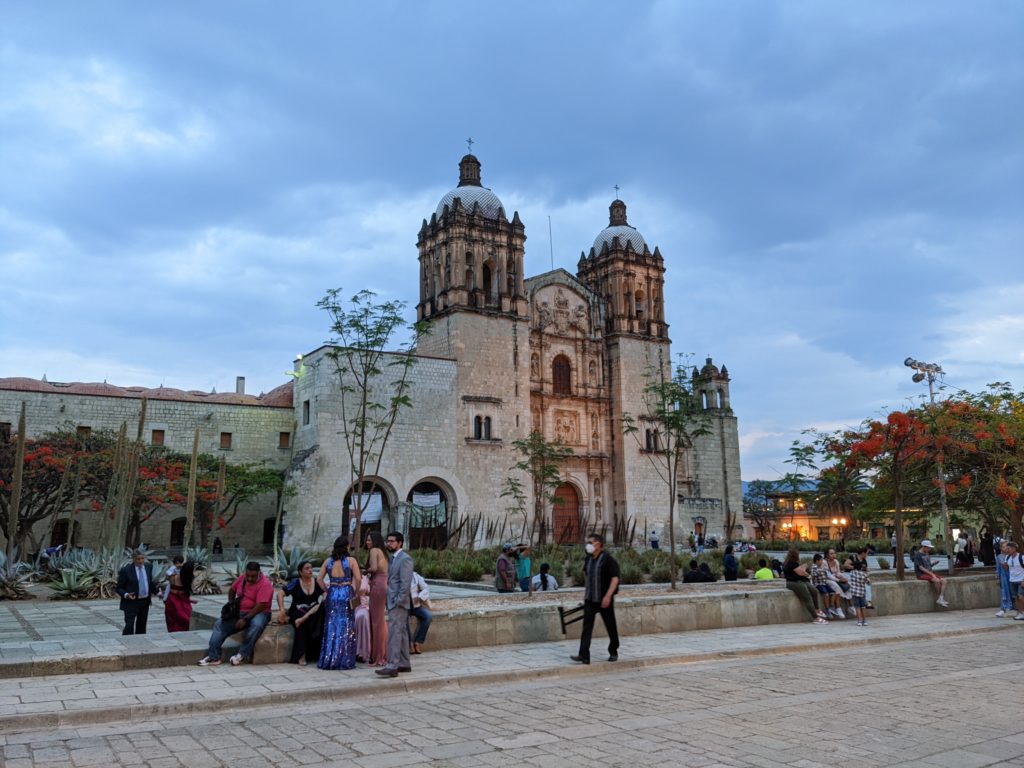
Quick look at the City. It’s like many places we’ve visited, except super clean. Cars actually slow and stop for pedestrians — occasionally waving us safely across the street. There are more churches here than Starbucks in Seattle. Giant old churches face each other on the same square. The architecture is ancient, interesting and sometimes colorful. The streets are cobblestone (at least here in el centro – the part of the city we’ve spent most of our time in).


Time to Eat. Where to start? It’s good. Really good. Even the bad food is pretty decent. We’ve eaten on every street corner, plus many cafes and roof tops. Pro Tip: for a play-by-play of what we ate, definitely check out our Instagram @NoMapRequired because we posted a lot of food pics. Probably our favorite thing is not so exotic, but fresh-cut mango sold by a little old lady on side of the street and costing next to nothing is a treat not to be missed!

Aaron loves a trip to the “panadaria” (bakery). He’s dreamed of returning since we we’re at our last South American panadaria in 2015. Dreams came true…and true several more times. He fills his bag more than he can eat every time.
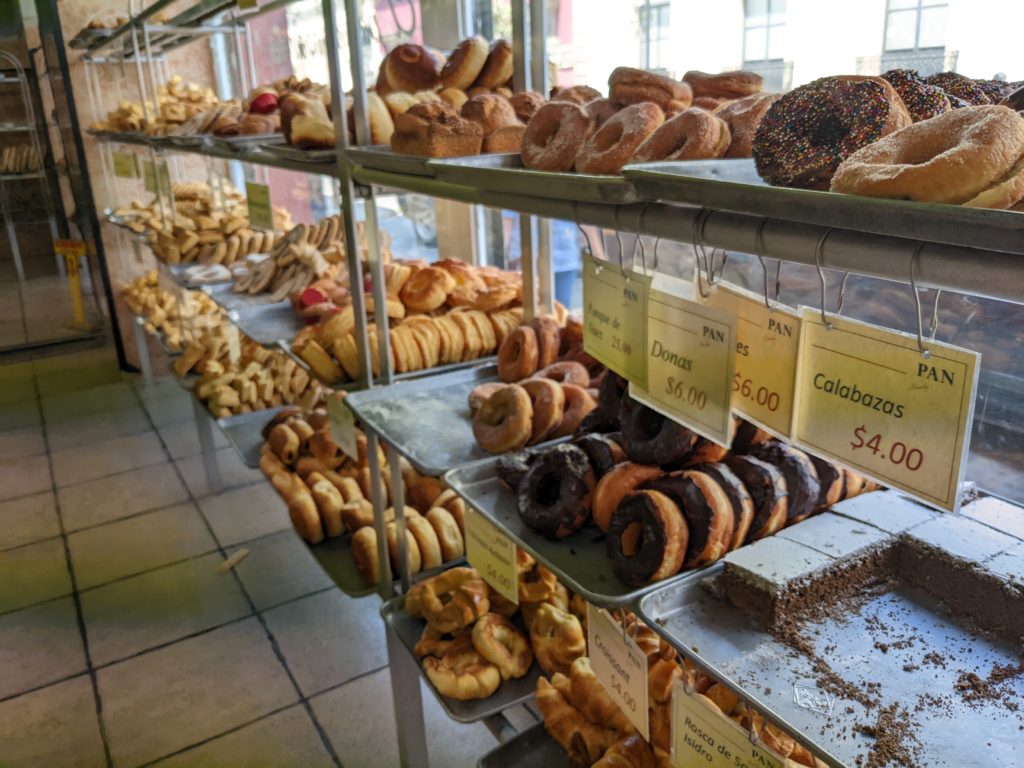
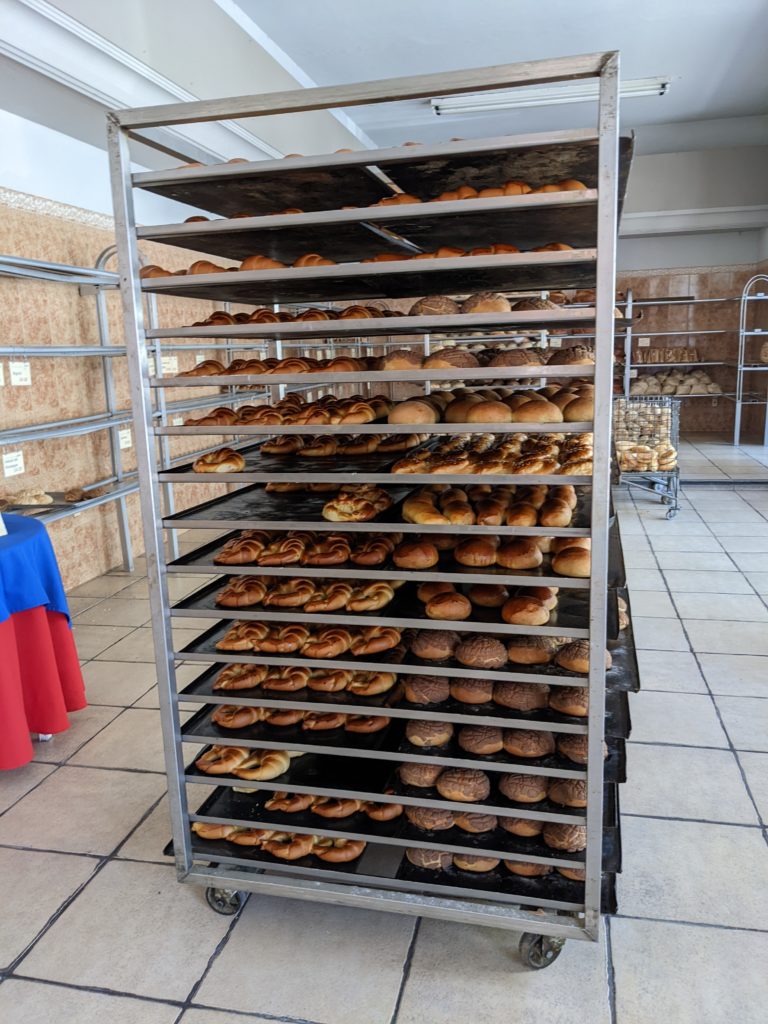
We did a spectacular mole tasting! Oaxaca is home to seven moles (a very specific kind of chile sauce that’s not necessarily hot). The great thing about the tasting was that we got to try some that are typically reserved for special occasions with family, so we are not likely to come across them in restaurants or food carts.


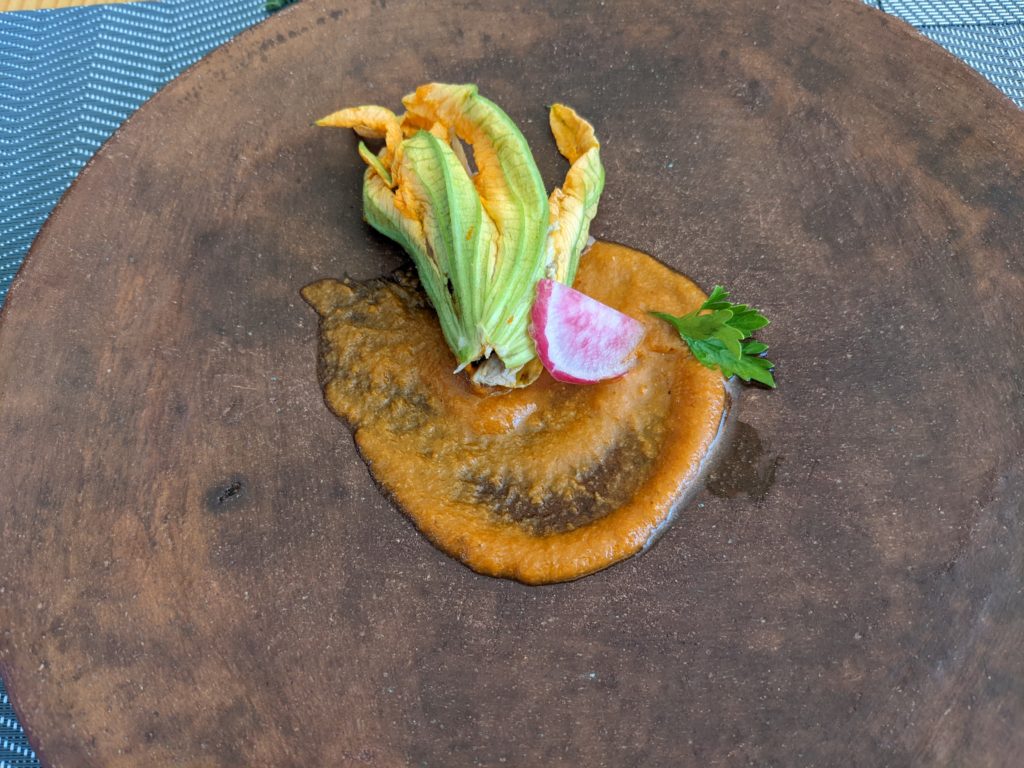

We also did a “cooking” class to learn more about traditional Oaxacan food. Thankfully, there was a team of established cooks doing all the hard work. We did a little tiny bit of the prep. Just enough to get a little understanding of what it takes to make some of the foods we’ve been enjoying. We did make a particularly delicous and easy salsa and are wondering if we can possibly replicate it at home. Time will tell.


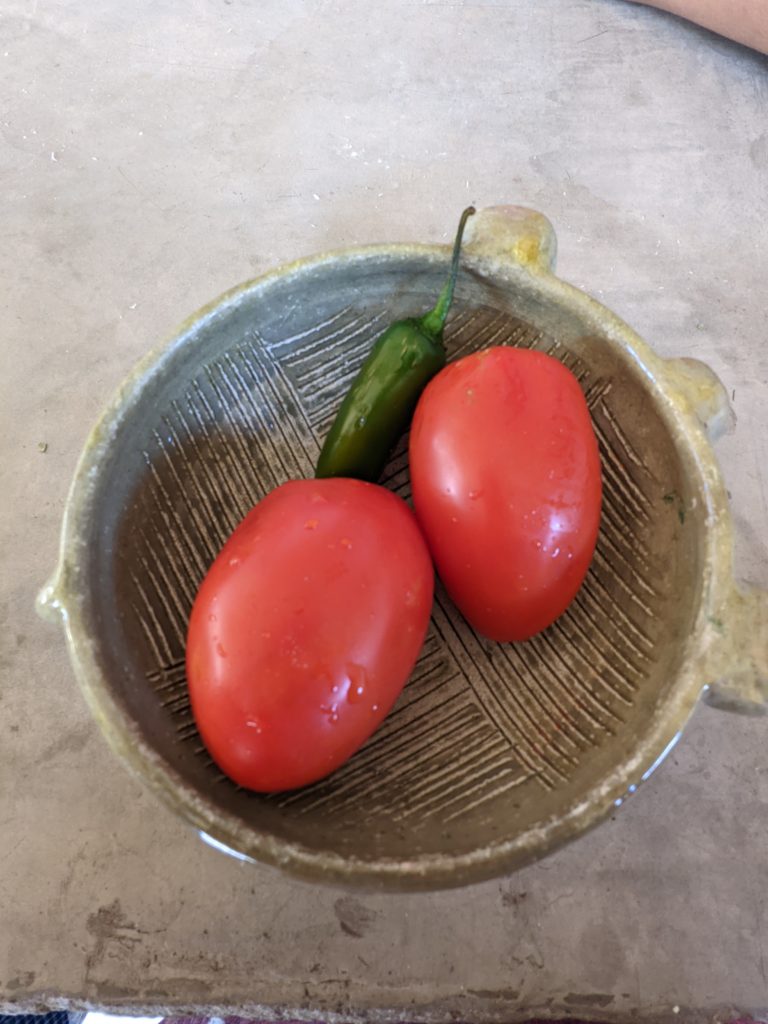


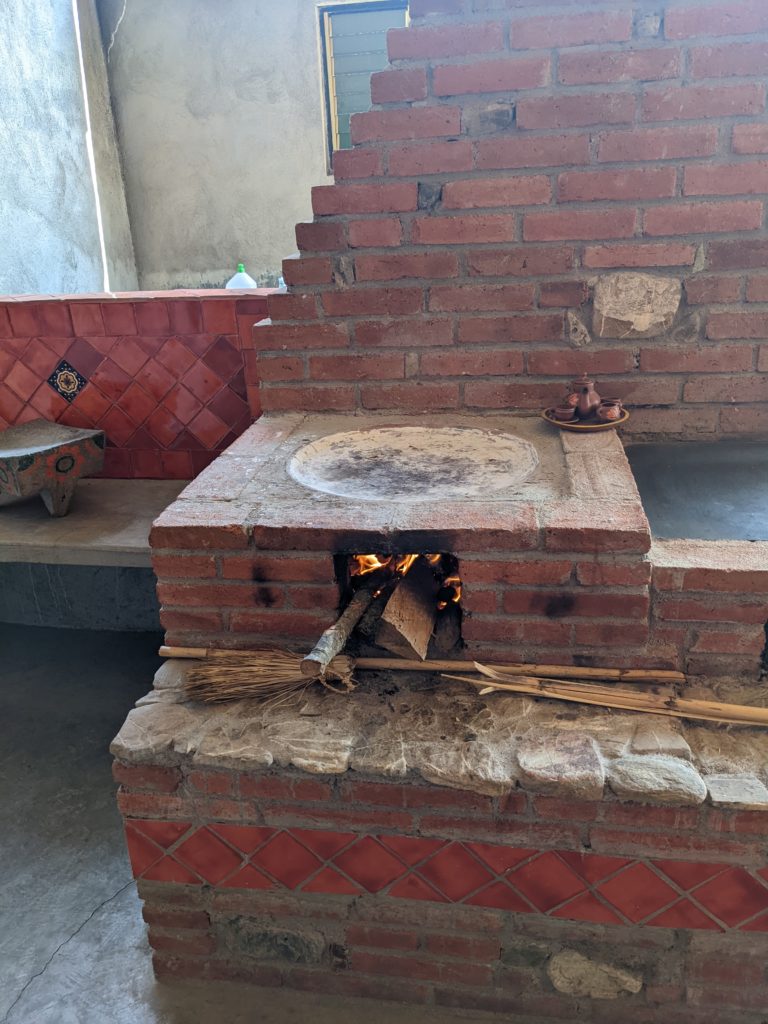
We’ve also been on our own self-declared chocolate tour. Oaxaca produces a lot of chocolate, which we would say tastes more fruity or sour compared to what we are used to at home. Chocolate shows up in desserts and is also drunk hot and cold. We’ve stopped for a lot of chocolate tastings which is a fun way to explore new streets and neighborhoods. You’re not surprised that we summed up food with bread and chocolate, are you?




Art EVERYWHERE is not joke. There is street art galore. We can hardly walk down the street without taking photos every few feet. It can take a loooong time to get to our destinations.
There are several arts traditions in this area and one of the most visible is the block-printed wheat paste-ups. We’ve learned from a couple of galleries that this style of art began as a protest during social and political uprising in the 1980’s and continues today. Practically every street has some example of this art. The image is carved and then printed on to a material, and in this case eventually pasted to an outside wall.
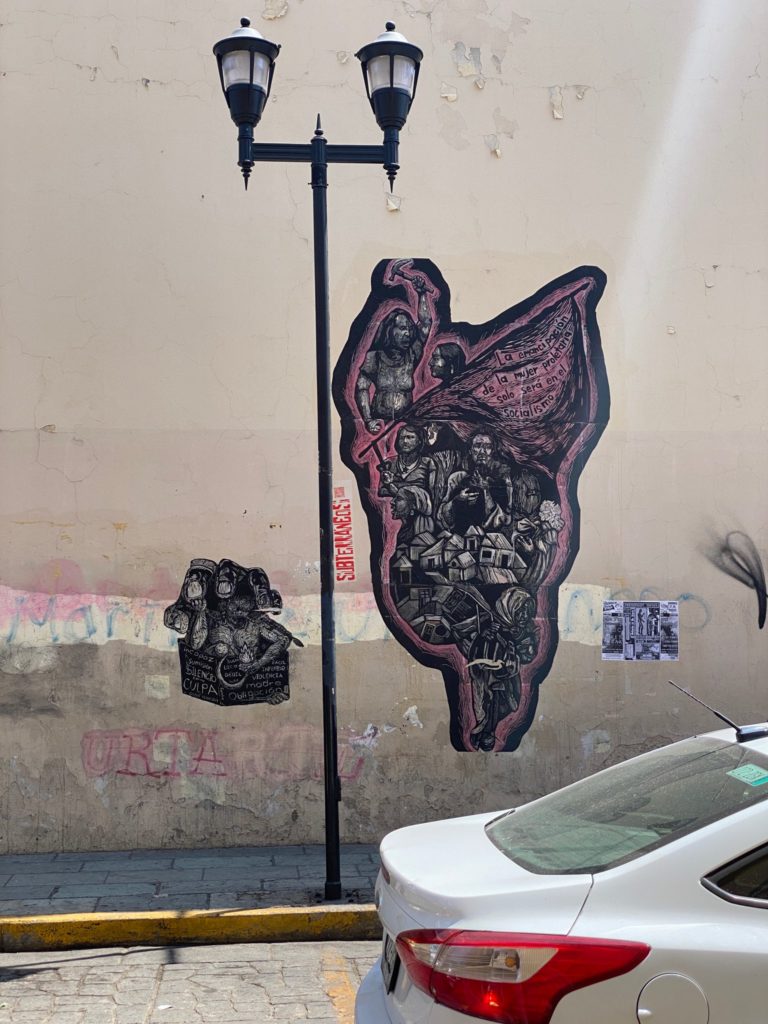

We took two classes in the medium. We carved on wood/MDF and printed on paper. Aaron made his character Bill with a Mexican twist. Anner wanted to keep with the roots of protest and was sure to include a girl reading in acknowledgement of all the book-banning that is underway. (Math books? Really, Florida? Anyway…). For our second class we focused on different techniques and practiced those in new designs. We love the wood blocks even more than the prints, so we hope to hang a couple of them when we get home.
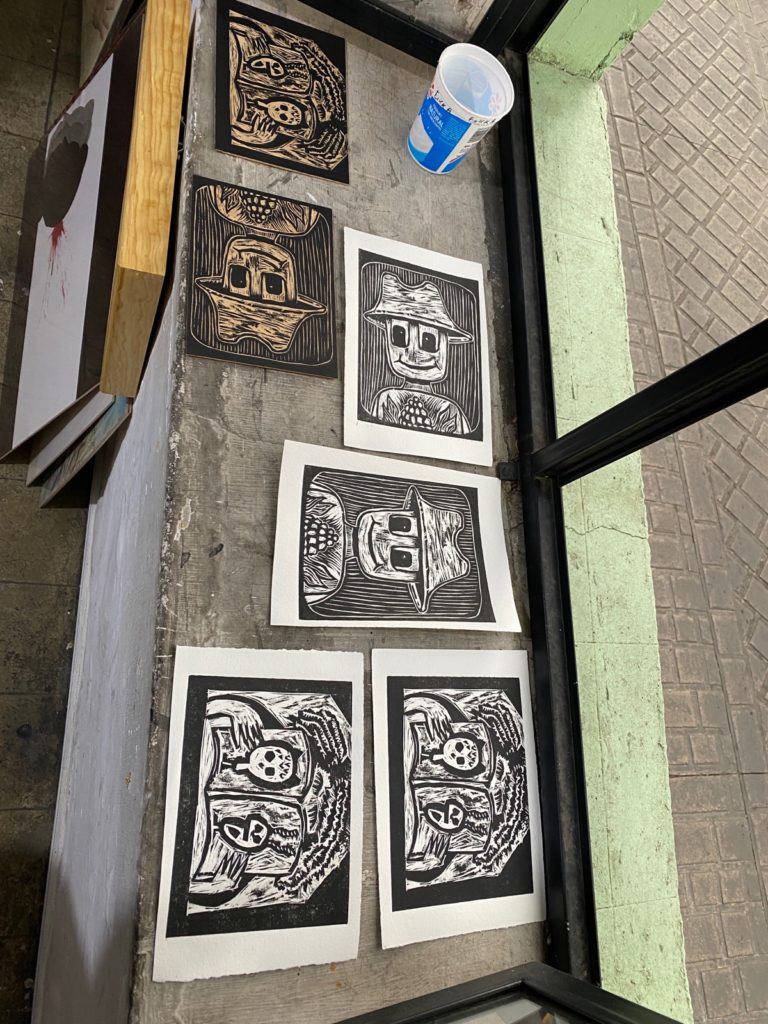




Embroidery is another art form we’ve seen a lot of and took a couple of classes in. You see the embroidery everywhere, right? It’s in all the glossy travel ads. It’s in the markets. I assume lots of it is mass-made, but I don’t really know that. There are still people/families who embroider stunning pieces by hand over the course of weeks, months and even years. In our first class as our instructor continued to say, ‘nice small, even stitches’, Anner said her Grandma O would say the same thing to her and all her cousins.
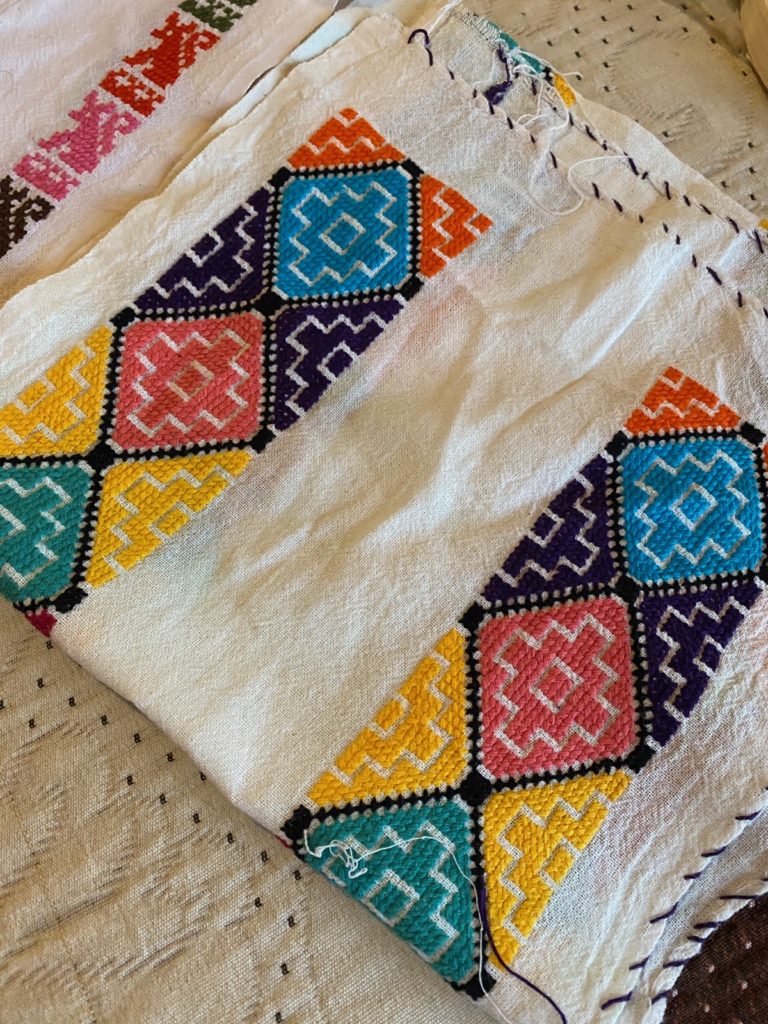
We learned a lot about the history of embroidery. It was brought here by the Spaniards and while we think of Mexico as this super colorful country– which it is now — it wasn’t always. Turns out it was enslaved African people the brought bright colors into Mexican textiles. Once more, all the things I didn’t know. The Spaniards also brought religion (ding, ding, ding — I knew that one!) and we all know “brought” isn’t really the right word. One way that indigenous people kept traditional religions alive was through embroidery – by sewing the tenets of the old religion on their clothing. So the Spaniards we’re all, ‘Great! You’re all Catholic now.’ but the colonized Mexican people are sitting in Mass wearing their traditional religion on their sleeves. Literally.




Alebrijes are a very specialized art here in Oaxaca. They are specially carved animals with intricate painted designs on them. Again, in the crowded tourist market they may be mass produced or perhaps not as nicely made, but when you get in with locals or nicer places it’s a whole different product. We weren’t planning to purchase one but then, well…we met the artist.

He and his extended family plant the trees, grow the trees, cut the trees, carve the animals, paint them and sell them. The Instagram @alebrijesoaxacamagico is off the hook. We saw the penguin in the market and really loved it. We left it behind and went to dinner. As we scrolled through the Instagram site and saw just how much work this family does to cultivate the artform and the quality they produce we wanted that penguin — BAD. Aaron said, “Should we go back for the penguin?” and Anner was already halfway back to the market. Just as they we’re closing we ran in and made the purchase. We can’t wait to show you in person so you can see the design up close because we can’t do it justice.
Weaving is also popular. We had planned on a day in the mountains learning to weave with some people we had met at the market, but unfortunately that trip got cancelled at the last minute. Still, making yarn, dying and weaving is an art we’d like to learn more about.
We have really enjoyed our time in Oaxaca and can see why people would return regularly. We have run into long-term travelers at most of our classes which is wonderful. We don’t know if or when we’ll be back, but we sure are glad we’ve had time to explore and take in this wonderful city.

